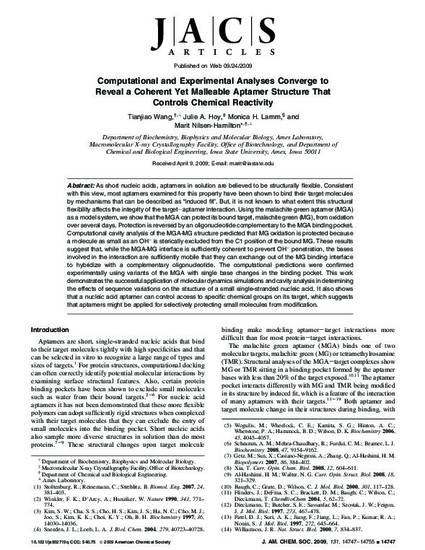
As short nucleic acids, aptamers in solution are believed to be structurally flexible. Consistent with this view, most aptamers examined for this property have been shown to bind their target molecules by mechanisms that can be described as “induced fit”. But, it is not known to what extent this structural flexibility affects the integrity of the target−aptamer interaction. Using the malachite green aptamer (MGA) as a model system, we show that the MGA can protect its bound target, malachite green (MG), from oxidation over several days. Protection is reversed by an oligonucleotide complementary to the MGA binding pocket. Computational cavity analysis of the MGA-MG structure predicted that MG oxidation is protected because a molecule as small as an OH− is sterically excluded from the C1 position of the bound MG. These results suggest that, while the MGA-MG interface is sufficiently coherent to prevent OH− penetration, the bases involved in the interaction are sufficiently mobile that they can exchange out of the MG binding interface to hybridize with a complementary oligonucleotide. The computational predictions were confirmed experimentally using variants of the MGA with single base changes in the binding pocket. This work demonstrates the successful application of molecular dynamics simulations and cavity analysis in determining the effects of sequence variations on the structure of a small single-stranded nucleic acid. It also shows that a nucleic acid aptamer can control access to specific chemical groups on its target, which suggests that aptamers might be applied for selectively protecting small molecules from modification.
Available at: http://works.bepress.com/monica_lamm/24/

Reprinted (adapted) with permission from Journal of the American Chemical Society, 2009, 131 (41), pp 14747–14755, doi:10.1021/ja902719q Copyright 2009 American Chemical Society.